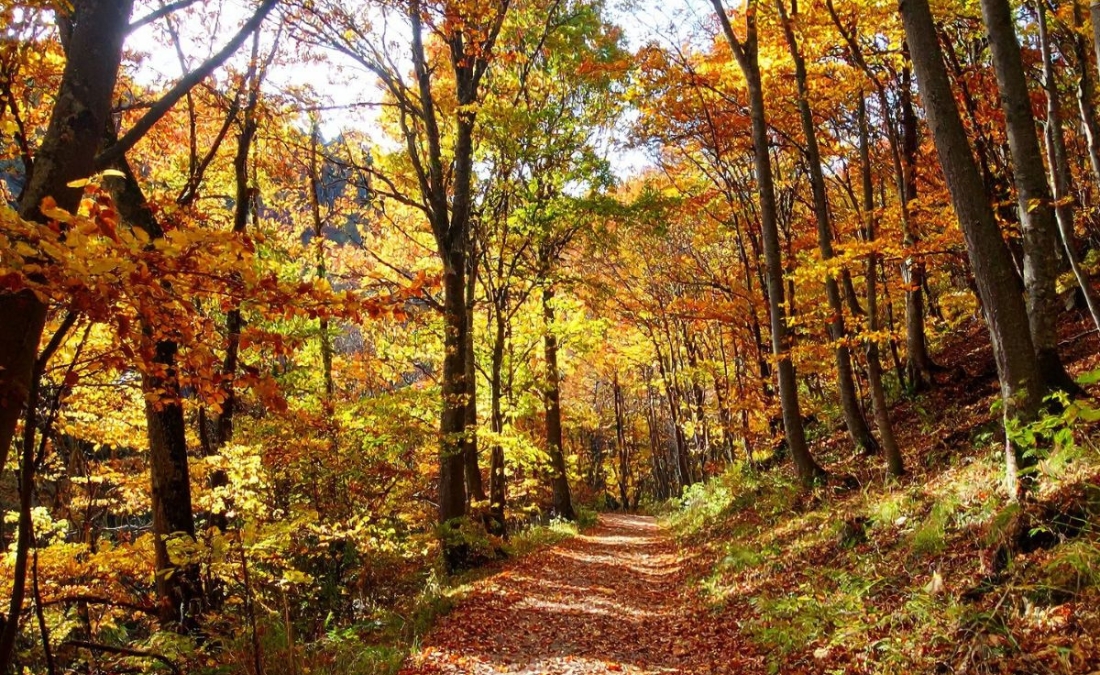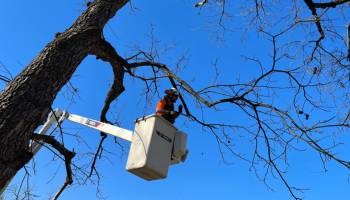The Oklahoma Redbud: Caring for Our State Tree
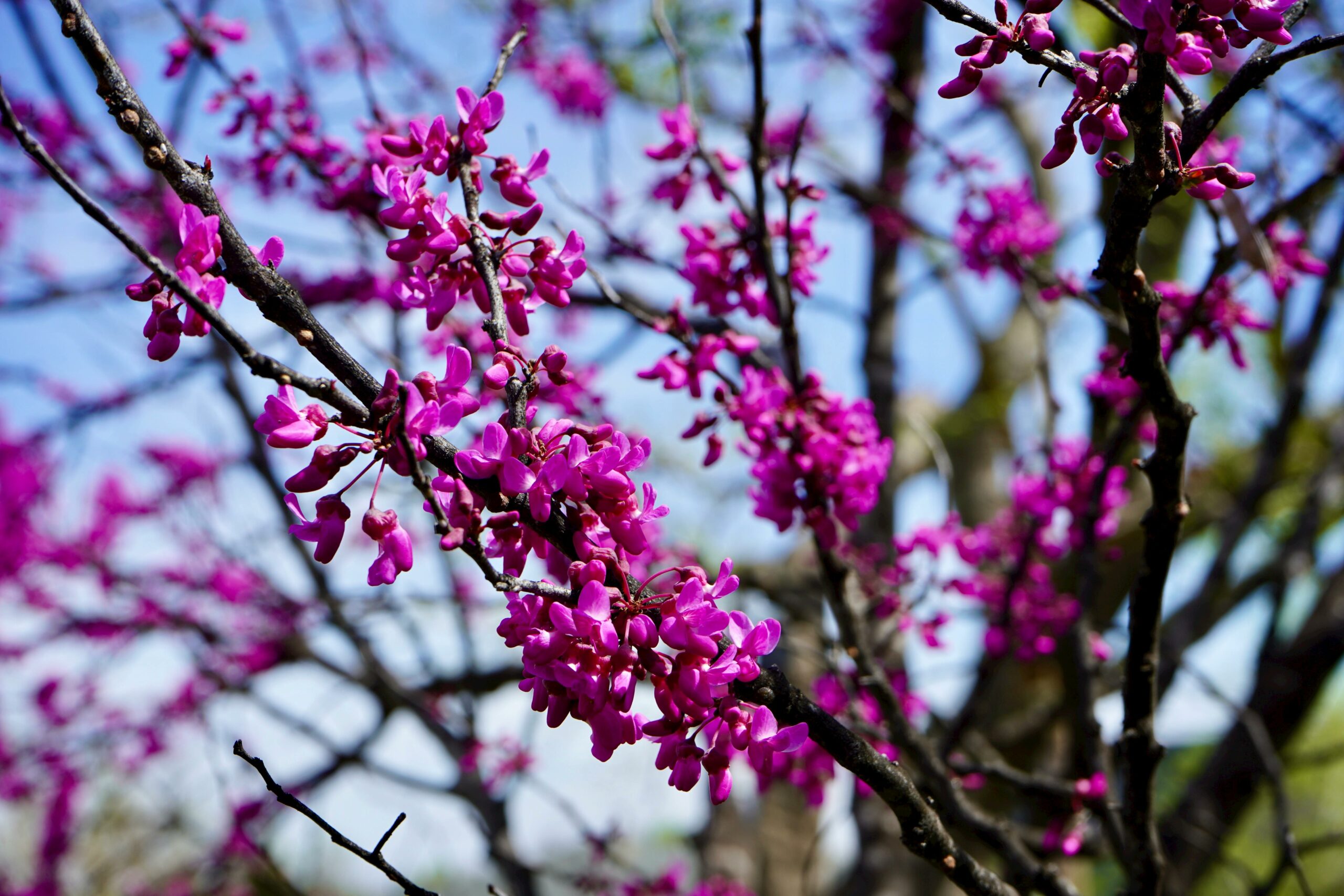
Want to show your state pride with the Oklahoma redbud? Arbor Masters provides 5 tips for a healthier and better-looking redbud in your Oklahoma yard.
You’ve seen them gracing parks and yards across the state – those stunning Oklahoma redbuds that seem to burst into flames each spring with their vibrant reddish-pink blooms. This small, deciduous tree, known for its heart-shaped leaves and striking flowers, is a true Oklahoma icon. And if you didn’t know, redbud blossoms are edible – some people even use them to make redbud jelly and in baked goods!
But if you’ve tried growing one yourself, you might have discovered that our beloved state tree isn’t as carefree as it appears. The good news? With the proper knowledge and five essential care tips, you can grow a redbud that will be the crown jewel of your landscape.
Key Takeaways:
- Oklahoma redbuds need careful placement with 6 hours of daily sun and enough space for their mature size of 20-30 feet tall and 20 feet wide to prevent damage to structures.
- Adding organic mulch around your redbud helps regulate soil temperature, provides nutrients through decomposition, and retains crucial moisture during hot summers.
- Annual fertilization (preferably in spring) is essential for redbuds; conduct a soil test first to avoid over-fertilization.
- During Oklahoma’s frequent droughts, water your trees deeply by soaking the soil under the drip line when the top two inches feel dry.
- Unlike other trees that benefit from winter pruning, trim redbuds after spring blooming to preserve their flowering buds and maintain their signature red display.
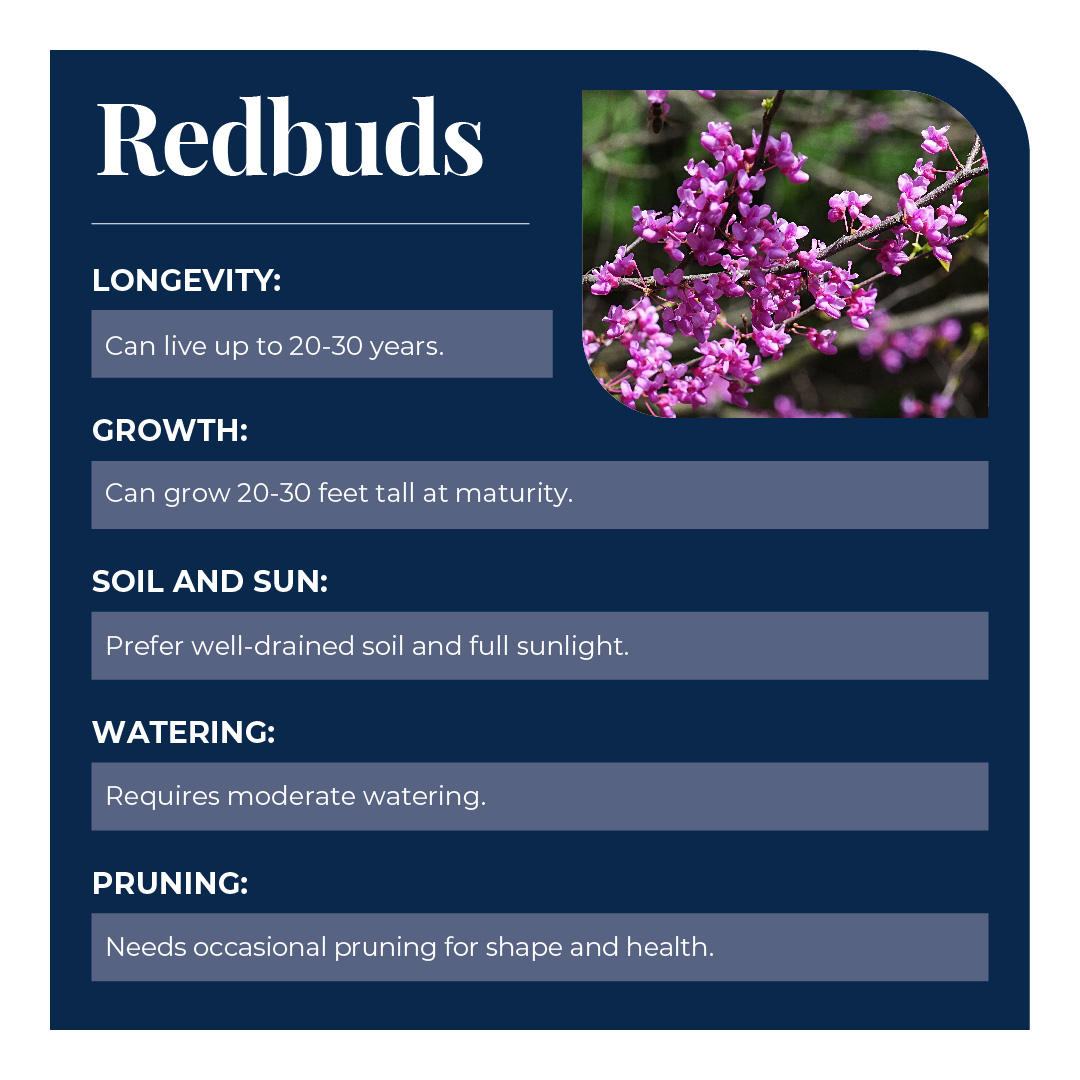
5 Tips to Grow a Beautiful Oklahoma Redbud Tree
Few things can produce such state pride as growing our state’s tree. Its striking red foliage makes it an eye-catching part of your landscape in the spring, and being a native tree, it helps our ecosystem when you plant one.
Redbuds are generally easy to grow, but they’re not completely maintenance-free. Without the right care, they can struggle to reach their full potential. Follow these five tips to help your redbud thrive for years to come.
1. Plant the Tree in the Right Place to Ensure Proper Space and Sunlight
In our industry, we have a saying, “the right tree in the right place.” Many homeowners could have prevented the problems with their trees by planting them in the right spot in the first place.
First, ensure space for the tree’s mature height. Oklahoma redbuds typically grow to be anywhere from 20-30 feet tall at maturity and can spread up to 20 feet.
While they aren’t massive, they do take up plenty of space. Planting it too close to a structure or other trees can lead to your redbud damaging windows or siding.
The other concern when you plant an Oklahoma redbud is sunlight. They thrive in full sun, at least 6 hours daily. Without sufficient sunlight, the tree will struggle to establish and grow.
Taller trees and structures block the sun and may make a part of your yard inhospitable to redbuds. Before planting, scout locations on your property and record a rough estimate of how much sunlight they receive on a given day.
Too much sunlight can harm your trees during the harsh summer heat (Tulsa sees daily average temperatures above 80 degrees in July). To protect the soil from drying out, try to plant your redbuds where they can get some relief from the heat in the afternoon shade.
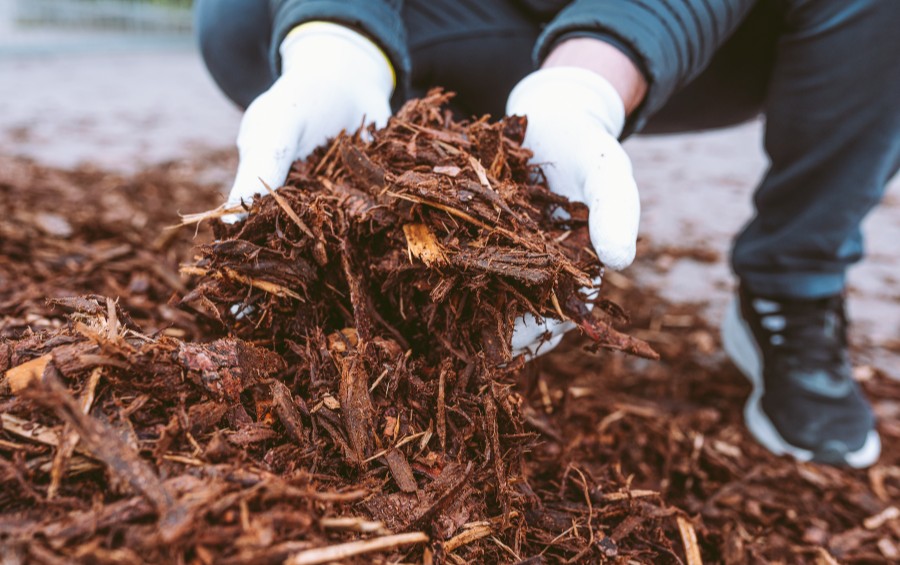
Apply Mulch for Numerous Benefits
A layer of organic mulch around your tree could be the difference between a healthy redbud and a struggling one. Some of the benefits of mulch around your redbud include:
- Keeps Soil Cool and Moist: The sun can overheat the soil, causing additional heat stress for your redbuds and causing water to evaporate. A layer of mulch acts like a blanket in the winter and an awning in the summer. The woodchips prevent direct sunlight from reaching the soil, keeping the temperature lower and helping retain moisture.
- Improves Soil Health: As organic mulch breaks down, it enriches the soil with nutrients, improving its structure and boosting tree health over time.
Provide Fertilizer to Avoid a Nutrient Deficiency
If you notice stunted growth and wilted leaves, it could be a sign your redbud is dealing with a nutrient deficiency. Trees depend on nutrients in the soil to survive, and without adding macro and micronutrients, they won’t get the food they need. Adding more organic matter provides better structure in the long run, but fertilizers provide a necessary boost immediately.
Before adding any fertilizer, have a professional conduct a soil test to determine what it lacks. Using a general fertilizer can add too much nitrogen and damage the roots.
We suggest annual fertilizer for your redbuds in the spring (though fall fertilization will also work). Time the fertilization application before new growth begins, and evenly distribute it around the tree’s drip line (the area under the canopy). This will encourage healthy root development.
Water Your Redbud During an Oklahoma Drought
Historically, Oklahoma has dealt with severe droughts nearly yearly. In 2024, a drought in late summer and early fall threatened most of the state and led to government assistance for farmers.
Droughts leave trees without adequate hydration or the ability to use the nutrients in the soil. Providing supplemental water can help nurse them through the drought.
To test if your tree needs water, dig a hole at least two inches deep and feel the soil. If it is cool and moist, you won’t need to add any water. But if it is dry, consider hydrating if the weather report isn’t calling for rain in the near future.
You can water your trees using a soaker hose or a five-gallon bucket with small holes in the bottom. The goal is to slowly soak the area under the drip line to deeply water the soil. Avoid watering the tree’s root flare (the part where the trunk meets the roots).
Avoid Winter Pruning to Preserve Your Tree’s Beauty
We encourage Oklahoma residents to handle most of their tree pruning during the winter when trees are dormant and pests are dead. However, with an ornamental like the Oklahoma redbud, we do not recommend pruning in the winter.
The buds that create the beautiful red flowers in the spring are on old growth. Winter pruning removes these buds, resulting in less vibrant color in the spring. Instead, time your pruning for just after the flowers finish blooming. Keep all trimming light to avoid stressing the tree.

Frequently Asked Questions About the Oklahoma Redbud
The redbud is a point of Oklahoma pride, and we love talking about it. We’ve compiled some common questions from homeowners, so you know everything about it.
Why does the Oklahoma redbud thrive in our state?
The tree thrives in Oklahoma for two main reasons: its leaves and adaptability. The leaves have a waxy surface that reduces water loss and protects them from the arid environment of Oklahoma. And the leaves’ heart shape allows them to absorb more sunlight to better accomplish photosynthesis. The tree also fairs well in the diverse soil types of Oklahoma, from clay to sandy soils.
How long do Oklahoma redbuds live?
The Oklahoma redbud is not a long-lived species, with most specimens lasting around 20-30 years. However, proper care can help extend the tree’s life and keep it healthy for its whole lifespan.
What are some other ornamental trees that grow well in Oklahoma?
Some ornamental tree and shrub options for Oklahoma residents include:
- Crape myrtle
- Crabapple
- Knockout rose
- Blue mist shrub
Arbor Masters Can Help You Care for Oklahoma’s State Tree
Whether you just planted a new Oklahoma redbud or have had one in your yard for a few years, taking care of it can be a challenge during our extreme weather. If you’re worried about your tree and aren’t sure how to keep it healthy, the team at Arbor Masters can help.
We offer tree preservation, pruning, and fertilization services that will keep your trees healthy and give you Oklahoma redbuds that will be the envy of your neighborhood. Our ISA Certified Arborists know all the ins and outs of getting perfect-looking ornamentals. Call us today at 405-495-8746 for stump grinding. or request a quote online.

Get the latest local news, tree care tips, special offers, and company updates directly to your inbox! It's easy to subscribe and there's no spam - we promise.
"*" indicates required fields




